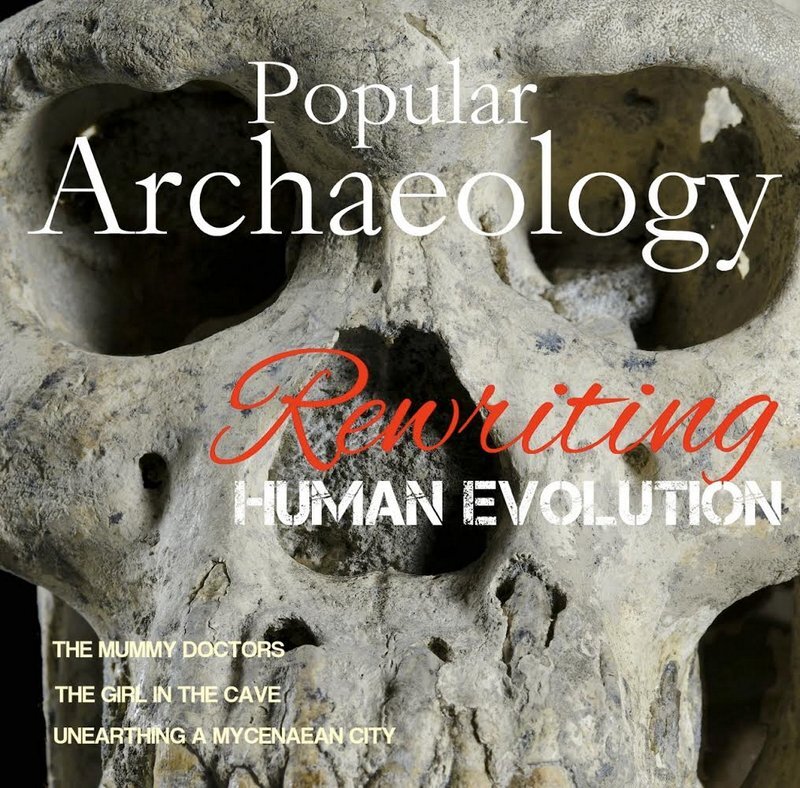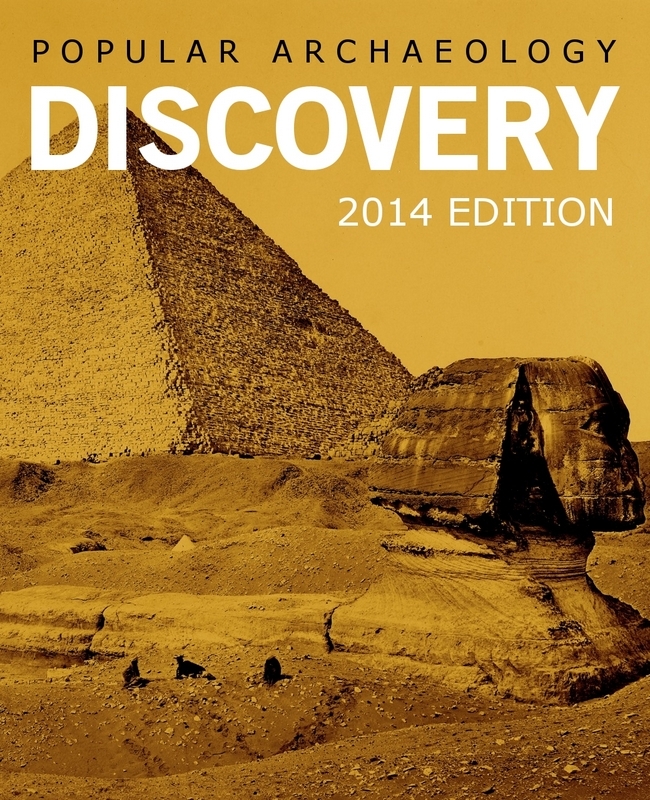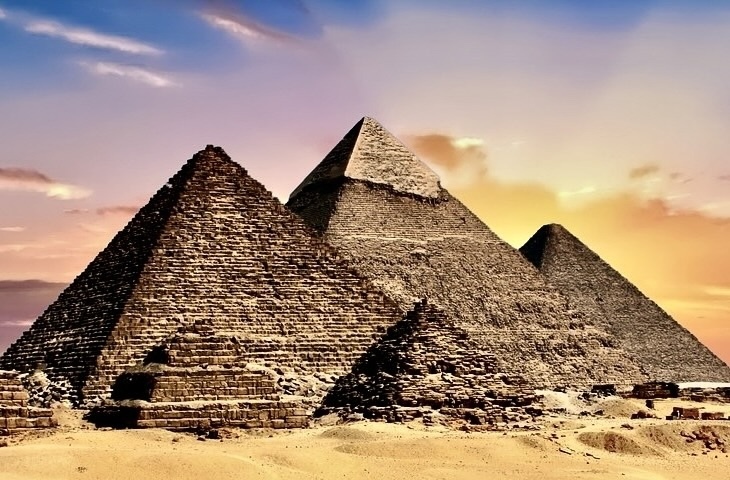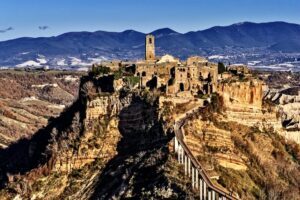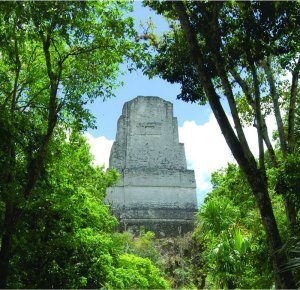
An international team of researchers argue that the reason for the collapse of the great ancient Maya city of Tikal during the 9th century CE was likely due to a lethal combination of persistent recurring episodes of drought and some of the very practices the Maya employed to create a successful and, for a time, sustainable system for supporting its massive and growing urban population.
Through forest surveys, satellite imagery, excavations, coring, and examinations of wood, plant, and soil samples collected from the Tikal zone inhabited during the Maya Late Classic period (LCP, 600 – 850 CE), David L. Lentz of the University of Cincinnati and colleagues from other institutions studied the agro-forestry and agricultural land use practices of the Maya, as well as the evidence for environmental change, to build what they consider to be a likely scenario for the famous collapse of the great Tikal polity.
Located in the Petén Basin of present-day northern Guatemala, Tikal was the political center of one of the most powerful Maya kingdoms. With monumental construction dating back to the 4th century BC, Tikal reached its zenith during the Classic Period, ca. 200 to 900 AD. Following the end of the Late Classic period, archaeological investigation shows evidence that major monumental construction stopped, and that elite structures were burned. This coincided with significant population decline, culminating in the site’s abandonment. But Tikal was not the only Maya center that experienced such decline at this time, and one of the great mysteries of the ancient Maya revolves around the scholarly debate regarding the reasons for the great collapse of so much of the ancient Maya world at the end of their greatest florescence during the Classic period. Drought, unsustainable agricultural practices, warfare, and overpopulation, among other factors, have all been cited as possible causes.
 Above and below: Ruins of the Maya city, Tikal. Courtesy David L. Lentz.
Above and below: Ruins of the Maya city, Tikal. Courtesy David L. Lentz.
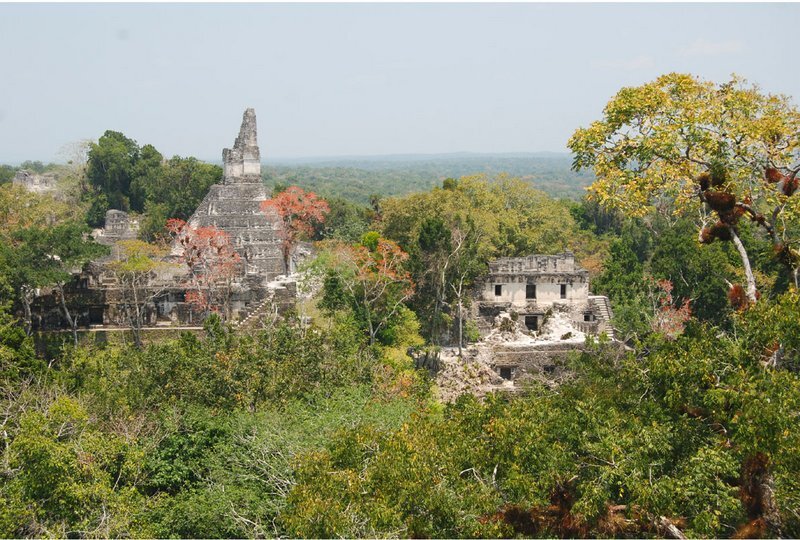 This latest study focused on examining evidence related to the agricultural and environmental factors. Their data and analysis showed that Tikal’s inhabitants practiced intensive forms of agriculture, including irrigation, terracing, and slash-and-burn cultivation, coupled with carefully controlled agro-forestry and water conservation techniques. “Empirical evidence is presented to demonstrate that this assiduously managed anthropogenic system of the Classic period Maya was a landscape that was optimized in a way that provided sustenance to a relatively large population in a pre-industrial, low-density urban community,” wrote Lentz and colleagues in the report published by the Proceedings of the National Academy of Sciences (PNAS). “This landscape productivity optimization, however, came with a heavy cost of reduced environmental resiliency and a complete reliance on consistent annual rainfall.”* The report authors supported this with findings from their collection and analysis of mineral deposits from regional caves, which indicated episodes of persistent and unusually low rainfall during the mid-9th century, coinciding with the archaeological evidence of Tikal’s abandonment during that time period. Moreover, argue the researchers, the drought was likely enhanced by the inhabitants of Tikal itself, “as there is a growing body of evidence that indicates forest clearance, even partial forest clearance, will negatively impact the hydrologic cycle.”*
This latest study focused on examining evidence related to the agricultural and environmental factors. Their data and analysis showed that Tikal’s inhabitants practiced intensive forms of agriculture, including irrigation, terracing, and slash-and-burn cultivation, coupled with carefully controlled agro-forestry and water conservation techniques. “Empirical evidence is presented to demonstrate that this assiduously managed anthropogenic system of the Classic period Maya was a landscape that was optimized in a way that provided sustenance to a relatively large population in a pre-industrial, low-density urban community,” wrote Lentz and colleagues in the report published by the Proceedings of the National Academy of Sciences (PNAS). “This landscape productivity optimization, however, came with a heavy cost of reduced environmental resiliency and a complete reliance on consistent annual rainfall.”* The report authors supported this with findings from their collection and analysis of mineral deposits from regional caves, which indicated episodes of persistent and unusually low rainfall during the mid-9th century, coinciding with the archaeological evidence of Tikal’s abandonment during that time period. Moreover, argue the researchers, the drought was likely enhanced by the inhabitants of Tikal itself, “as there is a growing body of evidence that indicates forest clearance, even partial forest clearance, will negatively impact the hydrologic cycle.”*
“In short,” concluded the study authors, “the construction of extensive pavements combined with forest clearance likely exacerbated the effect of the drying trend, so by the mid-9th century there were inadequate supplies of water and food with little resilience left in the system to adapt to new conditions.”* As a result, according to Lentz, et al., the social structure of Tikal eventually collapsed and the core of the city was abandoned, “leaving only a tiny relict population huddled around the few water holes that did not dry up”*
The researchers suggest that similar scenarios played out throughout the Central Maya Lowlands during this time period, possibly explaining the great “Maya collapse” at the end of the Classic period.
_________________________________
Information Sources: Press rlease of the PNAS, Drought and sustainability at ancient Maya city; and PNAS Article #14-08631 (see below).
* Article #14-08631: “Forests, fields, and the edge of sustainability at the ancient Maya city of Tikal,” by David L. Lentz et al. www.pnas.org/cgi/doi/10.1073/pnas.1408631111
Cover Photo: Ruins of the Maya city, Tikal. Courtesy David L. Lentz
________________________________
Just released!
The special new premium quality print edition of Popular Archaeology Magazine. A beautiful volume for the coffee table.
Travel and learn with Far Horizons.
Read about the most fascinating discoveries with a premium subscription to Popular Archaeology Magazine. Find out what Popular Archaeology Magazine is all about. AND MORE:
On the go? Get the smartphone version of Popular Archaeology as an app or as an ebook.
Popular Archaeology’s annual Discovery Edition eBook is a selection of the best stories published in Popular Archaeology Magazine in past issues, with an emphasis on some of the most significant, groundbreaking, or fascinating discoveries in the fields of archaeology and paleoanthropology and related fields. At least some of the articles have been updated or revised specifically for the Discovery edition. We can confidently say that there is no other single issue of an archaeology-related magazine, paper print or online, that contains as much major feature article content as this one. The latest issue, volume 2, has just been released. Go to the Discovery edition page for more information.

